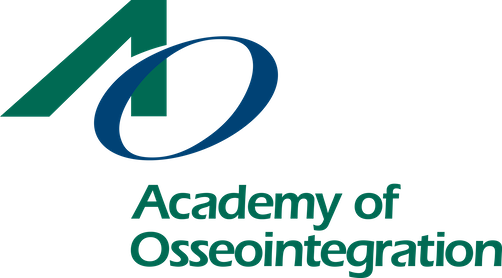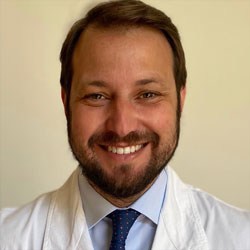-
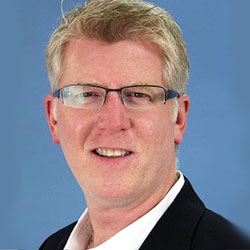 Lee Culp, CDT As dentistry evolves into the digital world, the successful incorporation of computerization and new technology will continue to provide more efficient methods of communication and fabrication while at the same time retaining the individual creativity and artistry of the skilled dentist and dental technician, while the utilization of new technology will continue to enhance the close cooperation and working relationship of the dentist/technician team. This presentation will offer participants a unique insight into digital design by creating a Virtual Patient by combining 3D Face Scanning, IOS and CT scans. Then using a combination of Diagnostic, Restorative, Orthodontic, Denture and Implant planning software for pre surgical planning to design, printed diagnostic wax-up and milled provisional PMMA restorations, and their digital replicas to guide us in the creation of cad-cam restorations, for both tooth and implant supported prosthetics. Recorded - February 5, 2022
Lee Culp, CDT As dentistry evolves into the digital world, the successful incorporation of computerization and new technology will continue to provide more efficient methods of communication and fabrication while at the same time retaining the individual creativity and artistry of the skilled dentist and dental technician, while the utilization of new technology will continue to enhance the close cooperation and working relationship of the dentist/technician team. This presentation will offer participants a unique insight into digital design by creating a Virtual Patient by combining 3D Face Scanning, IOS and CT scans. Then using a combination of Diagnostic, Restorative, Orthodontic, Denture and Implant planning software for pre surgical planning to design, printed diagnostic wax-up and milled provisional PMMA restorations, and their digital replicas to guide us in the creation of cad-cam restorations, for both tooth and implant supported prosthetics. Recorded - February 5, 2022 -
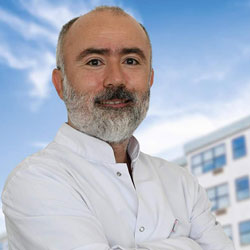 Guney Yilmaz, DDS, PhD In this presentation, detailed information regarding the surgical use of preferred hard and soft tissue lasers for periodontal treatments and implantology is going to be shared. In order to make effective use of lasers in dentistry, the basic physical principles and technical properties of lasers are going to be highlighted. Subsequently, the basics of using hard and soft tissue lasers in periodontal surgery are going to explained as well as how clinicians can benefit from these devices in implantology will be illustrated using cases. Recorded - October 20, 2022
Guney Yilmaz, DDS, PhD In this presentation, detailed information regarding the surgical use of preferred hard and soft tissue lasers for periodontal treatments and implantology is going to be shared. In order to make effective use of lasers in dentistry, the basic physical principles and technical properties of lasers are going to be highlighted. Subsequently, the basics of using hard and soft tissue lasers in periodontal surgery are going to explained as well as how clinicians can benefit from these devices in implantology will be illustrated using cases. Recorded - October 20, 2022 -
 Ueli Grunder, DMD Although we all prefer to talk about beautiful successes, it is usually more interesting to talk about complications. Even before a planned implantation in the esthetic zone, there may be problems that require a special intervention. During implant therapy, usually in combination with bone and soft tissue augmentation, undesirable complications can occur, especially in the way of poor healing, and finally, unsatisfactory results are seen after the end of the treatment, which may require re-treatment. In most cases, the complications manifest themselves quantitatively or qualitatively in the soft tissue. In this lecture we will discuss how to deal with certain complications. Unfortunately, only a few examples can be discussed within the scope of this lecture. Recorded - June 21, 2022
Ueli Grunder, DMD Although we all prefer to talk about beautiful successes, it is usually more interesting to talk about complications. Even before a planned implantation in the esthetic zone, there may be problems that require a special intervention. During implant therapy, usually in combination with bone and soft tissue augmentation, undesirable complications can occur, especially in the way of poor healing, and finally, unsatisfactory results are seen after the end of the treatment, which may require re-treatment. In most cases, the complications manifest themselves quantitatively or qualitatively in the soft tissue. In this lecture we will discuss how to deal with certain complications. Unfortunately, only a few examples can be discussed within the scope of this lecture. Recorded - June 21, 2022 -
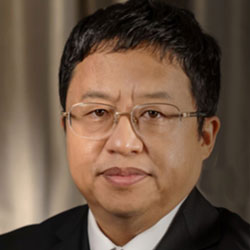 Haiyang Yu, PhD, DDS In implant surgery, a good linear guiding accuracy can be realized by static template, but it is still less than 1mm. Such accuracy, not as high as expected, can be attributed to the lack of physical measurement during the surgery. Physical measurement is an effective way to manage the implant error within the acceptable limits. Although periodontal probe is wildly used, it is not an appropriate measuring tool for implant surgery which requires accuracy less than 1mm. In order to ensure the implant accuracy, it is necessary to measure and check the crown-root ratio and angle of implants as well as the distance between implants and adjacent teeth by special measuring tools with less-than-1mm accuracy at each interoperative step. This presentation will review the evolution of the guiding methods of implant surgery and the accuracy of these methods, and elaborate on the significance and principle of interoperative physical-measurement through clinical cases. Recorded - May 19, 2022
Haiyang Yu, PhD, DDS In implant surgery, a good linear guiding accuracy can be realized by static template, but it is still less than 1mm. Such accuracy, not as high as expected, can be attributed to the lack of physical measurement during the surgery. Physical measurement is an effective way to manage the implant error within the acceptable limits. Although periodontal probe is wildly used, it is not an appropriate measuring tool for implant surgery which requires accuracy less than 1mm. In order to ensure the implant accuracy, it is necessary to measure and check the crown-root ratio and angle of implants as well as the distance between implants and adjacent teeth by special measuring tools with less-than-1mm accuracy at each interoperative step. This presentation will review the evolution of the guiding methods of implant surgery and the accuracy of these methods, and elaborate on the significance and principle of interoperative physical-measurement through clinical cases. Recorded - May 19, 2022 -
 Lambert Stumpel, DDS The restorative materials that are used for all on four implant fixed prosthesis vary between PMMA, composite, translucent and high strength Zirconia. Most need internal reinforcement to function successfully in the oral environment. Historically support consisted of a cast gold bar, in recent years CAD/CAM milled titanium has been popularized. Today yet another support system has been developed. It allows the fabrication of a metal bar in about 20-30 minutes, at a fraction of the cost of current CAD/CAM bars. This presentation will show how a prefabricated modular system, when combined with modern printing and milling techniques, allows the fabrication of a final prosthesis near time of implant placement. Recorded – February 25, 2023
Lambert Stumpel, DDS The restorative materials that are used for all on four implant fixed prosthesis vary between PMMA, composite, translucent and high strength Zirconia. Most need internal reinforcement to function successfully in the oral environment. Historically support consisted of a cast gold bar, in recent years CAD/CAM milled titanium has been popularized. Today yet another support system has been developed. It allows the fabrication of a metal bar in about 20-30 minutes, at a fraction of the cost of current CAD/CAM bars. This presentation will show how a prefabricated modular system, when combined with modern printing and milling techniques, allows the fabrication of a final prosthesis near time of implant placement. Recorded – February 25, 2023 -
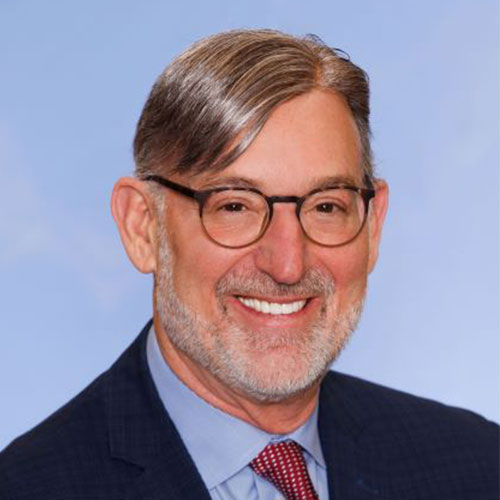
Robert Levine, DDS
This clinical, usable information- packed presentation will describe and identify 10 essential keys for performing immediate single tooth replacement of a hopeless maxillary central incisor. This treatment is considered a complex procedure and a team approach is suggested as the maxillary central incisor is seen as having the most esthetic zone failures resulting in unhappy patients. Once this occurs, restoring the lost hard and soft tissues to their original pre-surgical levels is near impossible. The updated 10 Keys checklist, if strictly followed, will provide high predictability in preventing esthetic complications and offers guidelines to ensure high success based on published studies by Dr. Levine and his clinical research group which confirm the use of the 10 Keys protocol.
Recorded February 4, 2023 -
 Prof. Dr. Tobias Fretwurst What if our therapies were as precise as Netflix recommendations? What sounds like the future is becoming increasingly commonplace in many areas of medicine. In this talk, Dr. Fretwurst will explain in simple terms what is meant by precision medicine and discuss its immense potential. Then he will showcase how his work group is already making use of this so-called personalized medicine in the field of implant dentistry. How can precision medicine be applied, for example, in grafting surgery? Can it revolutionize peri-implantitis diagnosis? What are the current limitations? Recorded - July 12, 2023
Prof. Dr. Tobias Fretwurst What if our therapies were as precise as Netflix recommendations? What sounds like the future is becoming increasingly commonplace in many areas of medicine. In this talk, Dr. Fretwurst will explain in simple terms what is meant by precision medicine and discuss its immense potential. Then he will showcase how his work group is already making use of this so-called personalized medicine in the field of implant dentistry. How can precision medicine be applied, for example, in grafting surgery? Can it revolutionize peri-implantitis diagnosis? What are the current limitations? Recorded - July 12, 2023 -
 Rand Harlow, DDS Maxillary anterior single tooth implant therapy can be challenging on multiple levels. Patients are becoming more demanding with their esthetic expectations. Achieving optimal esthetic outcomes requires an understanding of hard and soft tissue relationships, digital workflows and dental materials. This presentation will explore multiple considerations from diagnosis and treatment planning to treatment execution, in order to achieve acceptable esthetic results for maxillary implant surgery and restoration. Recorded - September 15, 2022
Rand Harlow, DDS Maxillary anterior single tooth implant therapy can be challenging on multiple levels. Patients are becoming more demanding with their esthetic expectations. Achieving optimal esthetic outcomes requires an understanding of hard and soft tissue relationships, digital workflows and dental materials. This presentation will explore multiple considerations from diagnosis and treatment planning to treatment execution, in order to achieve acceptable esthetic results for maxillary implant surgery and restoration. Recorded - September 15, 2022 -
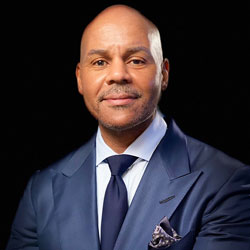 Richard Martin, DDS Collapse of the buccopalatal dimension of an extraction socket in implant dentistry is a known sequela. Multiple ridge preservation techniques to include bone and soft tissue grafting have been utilized over the years, Although these techniques can be successful, loss of buccal contour is a common finding even after 1 year in function. Ultimately this can lead the hygiene compromise and periimplantitis. Partial extraction therapy (PET) (socket shield, pontic shield and root submergence), specifically the socket shield is a technique aimed at addressing this collapse. The success of the procedure is due to intentional retention of small fragment of buccal root attached the bone. This root attachment has been shown to maintain the periodontal ligament (PDL)j and blood supply and as result the thin bundle bone. Utilization if the PET in full arch implant reconstruction has shown to be effective. Recorded - October 18, 2022
Richard Martin, DDS Collapse of the buccopalatal dimension of an extraction socket in implant dentistry is a known sequela. Multiple ridge preservation techniques to include bone and soft tissue grafting have been utilized over the years, Although these techniques can be successful, loss of buccal contour is a common finding even after 1 year in function. Ultimately this can lead the hygiene compromise and periimplantitis. Partial extraction therapy (PET) (socket shield, pontic shield and root submergence), specifically the socket shield is a technique aimed at addressing this collapse. The success of the procedure is due to intentional retention of small fragment of buccal root attached the bone. This root attachment has been shown to maintain the periodontal ligament (PDL)j and blood supply and as result the thin bundle bone. Utilization if the PET in full arch implant reconstruction has shown to be effective. Recorded - October 18, 2022 -
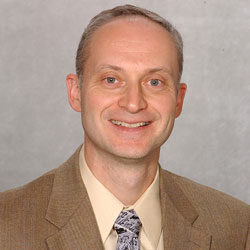 Len Tolstunov, DDS, DMD This presentation will discuss implant success and failure from the holistic approach and biologic balance that always exists between local and systemic factors. Loss of this balance and deterioration of key local factors and systemic condition will inevitably lead to a peri-implant bone loss and peri-implantitis. Surgical and some prosthetic considerations in implant failures will be discussed and clinical indices of implant success will be reviewed. Case presentations will help to review apical and marginal peri-implantitis. Inflammatory nature of peri-implantitis will be compared with non-inflammatory condition that can be classified as “peri-implantosis”. Treatment of peri-implantitis will be presented. Implant success will be defined as a dynamic process related to host’s health, as well as local factors, including bone and soft tissue quality around implant, implant design, and maintenance protocols. Finally, biologic principles of implant success at the time of implant placement and with age will be suggested. Recorded - January 19, 2022
Len Tolstunov, DDS, DMD This presentation will discuss implant success and failure from the holistic approach and biologic balance that always exists between local and systemic factors. Loss of this balance and deterioration of key local factors and systemic condition will inevitably lead to a peri-implant bone loss and peri-implantitis. Surgical and some prosthetic considerations in implant failures will be discussed and clinical indices of implant success will be reviewed. Case presentations will help to review apical and marginal peri-implantitis. Inflammatory nature of peri-implantitis will be compared with non-inflammatory condition that can be classified as “peri-implantosis”. Treatment of peri-implantitis will be presented. Implant success will be defined as a dynamic process related to host’s health, as well as local factors, including bone and soft tissue quality around implant, implant design, and maintenance protocols. Finally, biologic principles of implant success at the time of implant placement and with age will be suggested. Recorded - January 19, 2022 -
 Joseph Fiorellini, DMD, DMSc The clinician has multiple decisions when treatment planning for a compromised dentition. The evaluation of teeth for retention or extraction can involve factors including bone volume, extent of periodontal bone loss and restorability. The balance of these factors will enhance the predictably of the implants in the compromised dentition. Recorded - January 22, 2022
Joseph Fiorellini, DMD, DMSc The clinician has multiple decisions when treatment planning for a compromised dentition. The evaluation of teeth for retention or extraction can involve factors including bone volume, extent of periodontal bone loss and restorability. The balance of these factors will enhance the predictably of the implants in the compromised dentition. Recorded - January 22, 2022 -
 Pablo Galindo-Moreno, DDS, PhD This presentation will be focused on those surgical factors that are easier and more predictable maxillary sinus floor techniques.How these factors influence the consolidation of the graft used, prevent accidents and complications of these techniques and increase the long-term survival of implants placed in this location will be addressed. The choice of biomaterial suitable for these techniques will be discussed. Recorded - December 1, 2022
Pablo Galindo-Moreno, DDS, PhD This presentation will be focused on those surgical factors that are easier and more predictable maxillary sinus floor techniques.How these factors influence the consolidation of the graft used, prevent accidents and complications of these techniques and increase the long-term survival of implants placed in this location will be addressed. The choice of biomaterial suitable for these techniques will be discussed. Recorded - December 1, 2022 -
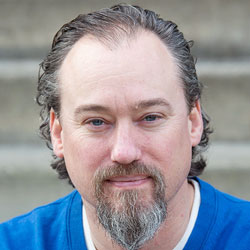 Cory Roletto, MBA This course will cover the most recent changes in online marketing and provide the components needed to create a comprehensive marketing strategy for both existing practices or start-ups. You will learn the key items to implement, how they work, and how to measure success. In this session we will discuss changes in Google’s algorithm, website optimization, social media, accessibility, and ways you can optimize your website to generate new patients. Recorded - March 23, 2022
Cory Roletto, MBA This course will cover the most recent changes in online marketing and provide the components needed to create a comprehensive marketing strategy for both existing practices or start-ups. You will learn the key items to implement, how they work, and how to measure success. In this session we will discuss changes in Google’s algorithm, website optimization, social media, accessibility, and ways you can optimize your website to generate new patients. Recorded - March 23, 2022 -
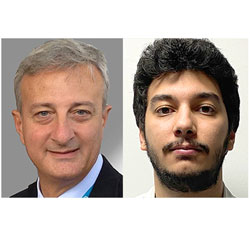 Giacomo Oteri, DDS, MD and Matteo Peditto, DDS, PhD, MSc More and more frequently, the oral surgeon uses analogic and digital diagnostic tools and workflows to perform oral and implant surgery procedures Does the use of these technologies always improve the precision of interventions, reducing morbidity and invasiveness? The current advantages and limitations of analogic and / or digital pathways in various clinical applications will be shown. Recorded - October 11, 2022
Giacomo Oteri, DDS, MD and Matteo Peditto, DDS, PhD, MSc More and more frequently, the oral surgeon uses analogic and digital diagnostic tools and workflows to perform oral and implant surgery procedures Does the use of these technologies always improve the precision of interventions, reducing morbidity and invasiveness? The current advantages and limitations of analogic and / or digital pathways in various clinical applications will be shown. Recorded - October 11, 2022 -
 Michael Miloro, DMD, MD Nerve injuries may occur following dental implant placement but there is no consensus on treatment protocols, and, unfortunately, patient morbidity may be significantly affect quality of life. Proper planning can mitigate the risk of nerve damage, but prompt diagnosis and management is required when nerve injury occurs. Both non-surgical and surgical options exist to treat these injuries, and current technological advances have allowed the use of a processed nerve allograft to repair the nerve with excellent outcomes. Recorded - June 30, 2022
Michael Miloro, DMD, MD Nerve injuries may occur following dental implant placement but there is no consensus on treatment protocols, and, unfortunately, patient morbidity may be significantly affect quality of life. Proper planning can mitigate the risk of nerve damage, but prompt diagnosis and management is required when nerve injury occurs. Both non-surgical and surgical options exist to treat these injuries, and current technological advances have allowed the use of a processed nerve allograft to repair the nerve with excellent outcomes. Recorded - June 30, 2022 -
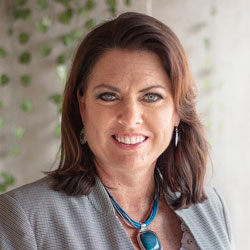 Kristie Kapp, RDH This webinar will discuss how to build a productive, profitable business without sacrificing patient and practice relationships. Dental practices which develop a culture shaped by a basic KPI's and team trust, naturally culminate in exceptional patient care, a bonded team, and a more joyous work experience. Recorded - May 3, 2022
Kristie Kapp, RDH This webinar will discuss how to build a productive, profitable business without sacrificing patient and practice relationships. Dental practices which develop a culture shaped by a basic KPI's and team trust, naturally culminate in exceptional patient care, a bonded team, and a more joyous work experience. Recorded - May 3, 2022 -
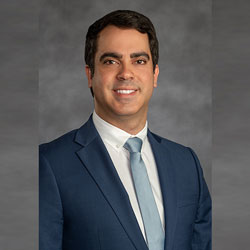 Rafael Siqueira, DDS, MS, PhD Immediate implant placement is a surgical approach that gained tremendously in popularity and patient acceptance throughout the years. One of the most desirable features of this technique is the potential in optimizing esthetic success by preserving the existing osseous and gingival architecture, with a reduced overall treatment time, invasiveness, and cost. However, unsuccessful treatments can occur if crucial biological principles are not respected. A thorough discussion concerning the bone remodeling process that occurs after tooth extraction and the 3D implant positioning in immediate implants is required. Together, these two factors will dictate the outcome of the peri implant tissue dimensions and architecture by their direct influence and interactions with other essential elements such as periodontal phenotype, loading protocol, abutment/prosthesis design, hard and soft-tissue augmentation. Recorded - April 20, 2022
Rafael Siqueira, DDS, MS, PhD Immediate implant placement is a surgical approach that gained tremendously in popularity and patient acceptance throughout the years. One of the most desirable features of this technique is the potential in optimizing esthetic success by preserving the existing osseous and gingival architecture, with a reduced overall treatment time, invasiveness, and cost. However, unsuccessful treatments can occur if crucial biological principles are not respected. A thorough discussion concerning the bone remodeling process that occurs after tooth extraction and the 3D implant positioning in immediate implants is required. Together, these two factors will dictate the outcome of the peri implant tissue dimensions and architecture by their direct influence and interactions with other essential elements such as periodontal phenotype, loading protocol, abutment/prosthesis design, hard and soft-tissue augmentation. Recorded - April 20, 2022 -
 Oliver Ristow, MD, DDS This course will cover the most recent changes in online marketing and provide the components needed to create a comprehensive marketing strategy for both existing practices or start-ups. You will learn the key items to implement, how they work, and how to measure success. In this session we will discuss changes in Google’s algorithm, website optimization, social media, accessibility, and ways you can optimize your website to generate new patients. Recorded - July 20, 2022
Oliver Ristow, MD, DDS This course will cover the most recent changes in online marketing and provide the components needed to create a comprehensive marketing strategy for both existing practices or start-ups. You will learn the key items to implement, how they work, and how to measure success. In this session we will discuss changes in Google’s algorithm, website optimization, social media, accessibility, and ways you can optimize your website to generate new patients. Recorded - July 20, 2022 -
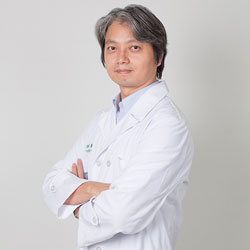 Reis Cheng-Hsiang Hsu, BDS, MS “PASS” principle (Primary wound closure, angiogenesis, space and stability) is the foundation for achieving predictable bone augmentation. This lecture will cover every aspect of this principle so the participants can predictably achieve the bone augmentation that is needed for proper implant placement and implant stability. The lecture will focus on the detail technique of extreme flap advancement, graft mobilization and the skill of flap closure that can be applied even in the vertical bone augmentation. Recorded - July 14, 2022
Reis Cheng-Hsiang Hsu, BDS, MS “PASS” principle (Primary wound closure, angiogenesis, space and stability) is the foundation for achieving predictable bone augmentation. This lecture will cover every aspect of this principle so the participants can predictably achieve the bone augmentation that is needed for proper implant placement and implant stability. The lecture will focus on the detail technique of extreme flap advancement, graft mobilization and the skill of flap closure that can be applied even in the vertical bone augmentation. Recorded - July 14, 2022

